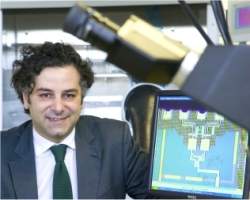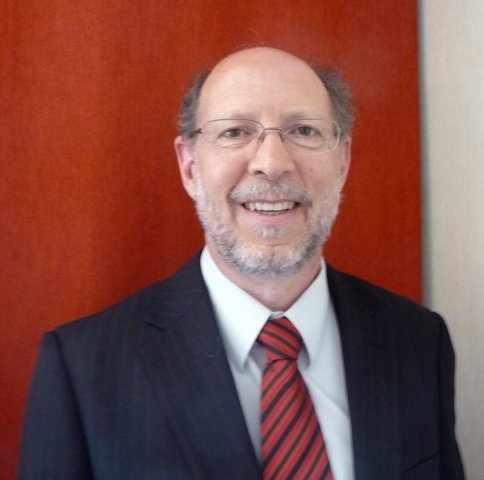News Facts
This year, the first wave of baby boomers are turning 65 – and with increased age comes increased risk of developing Alzheimer's disease.
Our new report, "Generation Alzheimer's: The Defining Disease of the Baby Boomers," sheds light on a crisis that is no longer emerging – but here.
Many baby boomers will spend their retirement years either with Alzheimer's or caring for someone who has it.
An estimated 10 million baby boomers will develop Alzheimer's.
Starting this year, more than 10,000 baby boomers a day will turn 65. As these baby boomers age, one of out of eight of them will develop Alzheimer’s – a devastating, costly, heartbreaking disease. Increasingly for these baby boomers, it will no longer be their grandparents and parents who have Alzheimer’s – it will be them.
"Alzheimer’s is a tragic epidemic that has no survivors. Not a single one," said Harry Johns, president and CEO of the Alzheimer’s Association. "It is as much a thief as a killer. Alzheimer’s will darken the long-awaited retirement years of the one out of eight baby boomers who will develop it. Those who will care for these loved ones will witness, day by day, the progressive and relentless realities of this fatal disease. But we can still change that if we act now."
According to the new Alzheimer’s Association report, "Generation Alzheimer’s," it is expected that 10 million baby boomers will either die with or from Alzheimer’s, the only cause of death among the top 10 in America without a way to prevent, cure or even slow its progression. But, while Alzheimer’s kills, it does so only after taking everything away, slowly stripping an individual’s autonomy and independence. Even beyond the cruel impact Alzheimer’s has on the individuals with the disease, Generation Alzheimer’s also details the negative cascading effects the disease places on millions of caregivers. Caregivers and families go through the agony of losing a loved one twice: first to the ravaging effects of the disease and then, ultimately, to actual death.
"Most people survive an average of four to six years after a diagnosis of Alzheimer’s disease, but many can live as long as 20 years with the disease. As the disease progresses, the person with dementia requires more and more assistance with everyday tasks like bathing, dressing, eating and household activities," said Beth Kallmyer, senior director of Constituent Relations for the Alzheimer’s Association. "This long duration often places increasingly intensive care demands on the nearly 15 million family members and friends who provide unpaid care, and it negatively affects their health, employment, income and financial security."
In addition to the human toll, over the next 40 years Alzheimer’s will cost the nation $20 trillion, enough to pay off the national debt and still send a $20,000 check to every man, woman and child in America. And while every 69 seconds someone in America develops Alzheimer’s disease today, by 2050 someone will develop the disease every 33 seconds - unless the federal government commits to changing the Alzheimer’s trajectory.
"Alzheimer’s – with its broad ranging impact on individuals, families, Medicare and Medicaid - has the power to bring the country to its financial knees," said Robert J. Egge, vice president of Public Policy of the Alzheimer’s Association. "But when the federal government has been focused, committed and willing to put the necessary resources to work to confront a disease that poses a real public health threat to the nation – there has been great success. In order to see the day where Alzheimer’s is no longer a death sentence, we need to see that type of commitment with Alzheimer’s." The full text of the Alzheimer’s Association’s"Generation Alzheimer’s" report can be viewed at www.alz.org/boomers.
About The Alzheimer's Association
The Alzheimer's Association is the world’s leading voluntary health organization in Alzheimer’s care, support and research.
Our mission is to eliminate Alzheimer’s disease through the advancement of research; to provide and enhance care and support for all affected; and to reduce the risk of dementia through the promotion of brain health.

The History of The Alzheimer’s Association
In 1979, Jerome H. Stone and representatives from several family support groups met with the National Institute on Aging to explore the value of a national, independent, nonprofit organization to complement federal efforts surrounding Alzheimer's disease. That meeting resulted in the April 10, 1980, formation of the Alzheimer'sAssociation with Mr. Stone as founding president.
Today, the Association reaches millions of people affected by Alzheimer’s across the globe through our national office and local chapters across the country. As the largest donor-supported, voluntary health organization for Alzheimer’s, the Association is a catalyst for advancements in Alzheimer's research and care.
Donate
Our online donation form is fast, easy and secure. You can make a general donation, a tribute/memorial donation to honor someone, or a monthly gift.
Alzheimer's Association is a not-for-profit 501(c)(3) organization. Donations are tax-deductible. Our federal tax ID number is 13-3039601.
Donate by phone: 1.800.272.3900
Donate by mail:
Send a check to: Alzheimer's Association
P.O. Box 96011
Washington, DC 20090-6011
Contacts
Email: info@alz.org
Phone: 800.272.3900
Alzheimer's Association
Public Policy Division
1212 New York Avenue, NW
Suite 800
Washington, DC 20005-6105
Phone: 800.272.3900
Alzheimer's Association
Public Policy Division
1212 New York Avenue, NW
Suite 800
Washington, DC 20005-6105







 O presidente da ABRASCO, Luiz Augusto Facchini, estará participando, no dia 06 de maio, do Fórum de Mobilização para Enfrentamento das Doenças Negligenciadas. Na oportunidade coordenará um painel que contará com as participações do Secretário Executivo de Vigilância em Saúde (SES/PE), Eronildo Felisberto ("Diagnóstico Situacional das Doenças Negligenciadas em Pernambuco"); Enrique Gil Bellorin, Gerente da Área de Controle de Doenças da OPAS/Brasil ("Plano Muncial de Combate às Doenças Negligenciadas") e; o Diretor do Centro de Pesquisas Aggeu Magalhães/Fiocruz, Eduardo Freese ("Cooperação da Pesquisa e do Ensino para o Controle de Doenças"). No evento será lançado o Programa Sanar, que tem objetivo de enfrentar doenças tropicais endêmicas que atingem a população de baixa renda (tracoma, chagas, esquistossomose, hanseníase, filariose, helmitíase e tuberculose). O Ministro da Saúde, Alexandre Padilha, o governador do Estado, Eduardo Campos e o Secretário de Estado de Saúde, Jarbas Barbosa confirmaram participação no evento. O Fórum será realizado, das 8h às 17h, no auditório do Centro de Convenções da UFPE, na Cidade Universitária. Veja a programação detalhada do encontro
O presidente da ABRASCO, Luiz Augusto Facchini, estará participando, no dia 06 de maio, do Fórum de Mobilização para Enfrentamento das Doenças Negligenciadas. Na oportunidade coordenará um painel que contará com as participações do Secretário Executivo de Vigilância em Saúde (SES/PE), Eronildo Felisberto ("Diagnóstico Situacional das Doenças Negligenciadas em Pernambuco"); Enrique Gil Bellorin, Gerente da Área de Controle de Doenças da OPAS/Brasil ("Plano Muncial de Combate às Doenças Negligenciadas") e; o Diretor do Centro de Pesquisas Aggeu Magalhães/Fiocruz, Eduardo Freese ("Cooperação da Pesquisa e do Ensino para o Controle de Doenças"). No evento será lançado o Programa Sanar, que tem objetivo de enfrentar doenças tropicais endêmicas que atingem a população de baixa renda (tracoma, chagas, esquistossomose, hanseníase, filariose, helmitíase e tuberculose). O Ministro da Saúde, Alexandre Padilha, o governador do Estado, Eduardo Campos e o Secretário de Estado de Saúde, Jarbas Barbosa confirmaram participação no evento. O Fórum será realizado, das 8h às 17h, no auditório do Centro de Convenções da UFPE, na Cidade Universitária. Veja a programação detalhada do encontro  Ligia Bahia, vice-presidente da ABRASCO e professora de economia da saúde no Instituto de Estudos em Saúde Coletiva (
Ligia Bahia, vice-presidente da ABRASCO e professora de economia da saúde no Instituto de Estudos em Saúde Coletiva ( A Universidade Federal de Pelotas (
A Universidade Federal de Pelotas ( "Epidemiologia – caderno de texto e exercício", de autoria de Roberto A. Medronho, Kátia Vergetti Bloch, Ronir Raggio Luiz e Guilherme Loureiro Werneck, foi a obra mais vendida pela
"Epidemiologia – caderno de texto e exercício", de autoria de Roberto A. Medronho, Kátia Vergetti Bloch, Ronir Raggio Luiz e Guilherme Loureiro Werneck, foi a obra mais vendida pela  A Estratégia de Saúde da Família (
A Estratégia de Saúde da Família ( Nelson Rodrigues dos Santos, participará de um debate online promovido pelo
Nelson Rodrigues dos Santos, participará de um debate online promovido pelo  O primeiro escritório internacional de representação da Fundação Oswaldo Cruz no exterior tem um novo representante. Após seis anos atuando na Coordenação da Área Técnica da Saúde do Idoso e na Direção do Departamento de Ações Programáticas e Estratégicas do Ministério da Saúde, o pesquisador da Escola Nacional de Saúde Pública José Luiz Telles assumiu o desafio de coordenar o Escritório Regional de Representação da Fiocruz na África (Fiocruz África). Telles substitui sua colega de departamento Célia Almeida, que participou de todo o processo de implantação do escritório - fruto da cooperação entre o Brasil e os países africanos, principalmente aqueles que integram a Comunidade de Países de Língua Portuguesa (CPLP) - e foi agraciada com a Comenda da Ordem de Rio Branco, oferecida em reconhecimento ao trabalho desenvolvido pela Fiocruz no continente africano. Mais informações
O primeiro escritório internacional de representação da Fundação Oswaldo Cruz no exterior tem um novo representante. Após seis anos atuando na Coordenação da Área Técnica da Saúde do Idoso e na Direção do Departamento de Ações Programáticas e Estratégicas do Ministério da Saúde, o pesquisador da Escola Nacional de Saúde Pública José Luiz Telles assumiu o desafio de coordenar o Escritório Regional de Representação da Fiocruz na África (Fiocruz África). Telles substitui sua colega de departamento Célia Almeida, que participou de todo o processo de implantação do escritório - fruto da cooperação entre o Brasil e os países africanos, principalmente aqueles que integram a Comunidade de Países de Língua Portuguesa (CPLP) - e foi agraciada com a Comenda da Ordem de Rio Branco, oferecida em reconhecimento ao trabalho desenvolvido pela Fiocruz no continente africano. Mais informações 


